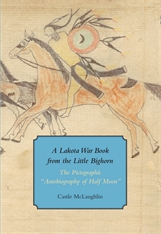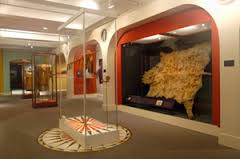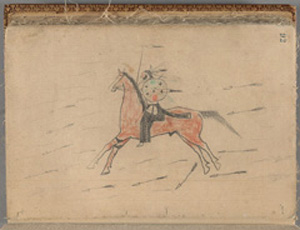Mark van de Logt: Between the Floods: A History of the Arikaras
June 11, 2025 by David
Filed under Non-Fiction, WritersCast
 Between the Floods: A History of the Arikaras — Mark van de Logt — University of Oklahoma Press —Paperback — 9780806194905 — 384 pages — $29.95 – October 1, 2024 – ebook versions available at lower prices
Between the Floods: A History of the Arikaras — Mark van de Logt — University of Oklahoma Press —Paperback — 9780806194905 — 384 pages — $29.95 – October 1, 2024 – ebook versions available at lower prices
During the past couple of years, I’ve read several really good books that recast the history of indigenous Americans both prior to, during, and after the invasion of North America by Europeans, first by explorers, fishermen and traders, and later by colonizers. Almost everything most of us learn about this part of the history of the Americas has been told and taught from the European perspective. Academic studies have similarly been mostly conducted by white Americans with indigenous people seen as subjects for interrogation and study by what is proposed to be a more “accurate” form of science, rather than treating indigenous people as equals, with practical knowledge, historical awareness, and actors with full credibility in the telling of their own histories and practices.
Mark van de Logt’s excellent book Between the Floods, purposely challenges the way the history of an indigenous people is studied and understood. Mark gives credence from the outset to the oral storytelling of the Arikara people, that sets forth their history in an oral tradition, which he then supplements with other forms of knowledge to expand them.
The Sahnis, or Arikara, as they are best known, were at one time a powerful independent nation, who likely migrated from the southwest hundreds of years ago, and settled in the Missouri River region in what is now mostly Nebraska (though today, the tribal lands are the Fort Berthold Reservation in North Dakota.)
The Arikaras, like their Hidatsa and Mandan neighbors on the northern plains, were both farmers and hunter-gatherers who thrived as corn growers and successful buffalo hunters. The arrival of Europeans, even hundreds of miles away from them brought pressure on their villages from other indigenous nations, notably the Lakhotas, whose larger population and more successful military forces caused displacements and relocations, and contact with Euro-Americans brought devastating diseases and other problems for the Arikara as well. Their important location on the Missouri River brought them into contact early on with French fur traders, the Spanish, and especially Americans after Lewis and Clark, often with damaging effects on their tribe.
Between the Floods creates a historical narrative of a resilient semi-sedentary people in their migration and settlement as they confront the colonialist era, endure many tribal conflicts, experience terrible diseases, and incorporate horses and metal tools into their culture. Arikara oral traditions and histories provide an entry into their past and current culture that at its core has survived intact despite so much suffering at the hands of their enemies and the conquering American society.
Mark uses information from archaeology, linguistics, and anthropology to enhance native storytelling, and the book is illustrated with Native maps and ledger art, along with historical photographs and drawings. There is no better way to understand this important tribal nation that likely is known to very few Americans today.
This is a terrific book. It’s well written, well-researched, and demonstrates throughout a deep appreciation for the Sahni people, their lifeways, history and traditions. This kind of history-telling is really important not only for the tribe but to all of us who know so little about their past and present lives. And Mark deep knowledge and broad field of study makes him a terrific interview subject.
Mark van de Logt is Associate Professor of History at Texas A&M University of Qatar, teaches in the Department of Modern Languages and Cultures at Radboud University, and is also the author of War Party in Blue: Pawnee Scouts in the U.S. Army (2010) and Monsters of Contact: Historical Trauma in Caddoan Oral Traditions (2018). Between the Floods was awarded the Erminie Wheeler-Voegelin Prize for best book in Ethnohistory from the American Society for Ethnohistory. His current research involves linking oral traditions to historical events. His articles appeared in the “Journal of Military History,” the “American Indian Quarterly,” the “American Indian Culture and Research Journal,” and “Wicazo Sa Review.” He is (co-)editor of the University of Nebraska Press’s “Studies in the Anthropology of North American Indian” series.
There is an interesting interview with Mark about the Arikara scouts for “The Friends of Little Bighorn” here.
Podcast: Play in new window | Download
Castle McLaughlin: A Lakota War Book from the Little Bighorn: The Pictographic “Autobiography of Half Moon”
November 30, 2014 by David
Filed under Art and Photography, Non-Fiction, WritersCast
 A Lakota War Book from the Little Bighorn: The Pictographic “Autobiography of Half Moon” (Houghton Library Publications)- 978-0981885865 – Paperback – Peabody Museum Press – $50 (no ebook version of this title!)
A Lakota War Book from the Little Bighorn: The Pictographic “Autobiography of Half Moon” (Houghton Library Publications)- 978-0981885865 – Paperback – Peabody Museum Press – $50 (no ebook version of this title!)
I was so excited by this book, I had to read Castle McLaughlin’s A Lakota War Book from the Little Bighorn several times over, studying the brilliant and beautiful reproductions of a nineteenth-century ledger book of pictographic drawings by Lakota Sioux and Cheyenne warriors that was found in 1876 in a funerary tipi on the Little Bighorn battlefield after Custer’s defeat. There is so much richness in McLaughlin’s story of the almost miraculous discovery of this document in Harvard’s Houghton Library and her subsequent years-long study of the book, together with Butch Thunder Hawk, historian of the Lakota Sioux, it was, for me, completely engrossing.
Nineteenth century journalist Phocion Howard acquired the book from one of the soldiers who took it from the battlefield, and later added his own illustrated narrative to the original pages, and had it bound in new leather with his own invented interpretation of the illustrations made by Cheyenne and Lakota artists.
Howard’s fabricated story had the seventy-seven Native drawings made by a “chief” named Half Moon, but McLaughlin persuasively argues that these beautifully made drawings, mostly of war and courting exploits, were drawn primarily by six different warrior-artists, some of whom she is able to identify with some certainty as historical figures who fought the invading settlers during Red Cloud’s War in 1866-1868.
These wonderfully evocative and powerful first-person illustrated scenes reflect a native view of the historic events of the plains tribes’ war for survival in this terrible period of American history. For the Lakota and other Plains tribes, art played an important role in recording and preserving their narratives of events of pre-reservation, pre-conquest tribal life, so books like this one provide a uniquely meaningful record of their lives.
McLaughlin tells the long story of the Howard book, provides detail and analysis of its cultural and historic significance, and places it within the context of Lakota and Cheyenne culture of the Plains during their fight against the invading Europeans. There is so much exciting work here for anyone who wants to know more about the events in the American west, where cultures clashed for nearly two centuries. During this time, Lakota, Cheyenne and other Plains tribes created a war based culture whose actual nature has not been fully understood. Most of our view is colored by images of that era framed by dime novels of the time and romanticized films of the 20th century. The ledger books give us an opportunity to see and experience this fraught period through actual Lakota and Cheyenne eyes, which is complicated and challenging. They also illustrate how warriors of that time appropriated the physical objects of their opponents as a way to capture their power as well.
The illustrations themselves are incredibly beautiful, and the stories they tell us, as interpreted by McLaughlin and Thunder Hawk, are completely engrossing. Getting a chance to talk to Ms. McLuaghlin about this book and her experiences as a social anthropologist was a great honor for me.
There is a great review of the book by Thomas Powers in the NY Review of Books, which is accompanied by excerpts of the art here.
Original exhibit of the book materials described here.
Castle McLaughlin is actively involved in the Nakota Horse Conservancy, which preserves some of the descendants of Lakota and Cheyenne horses. More about that here.


Podcast: Play in new window | Download

